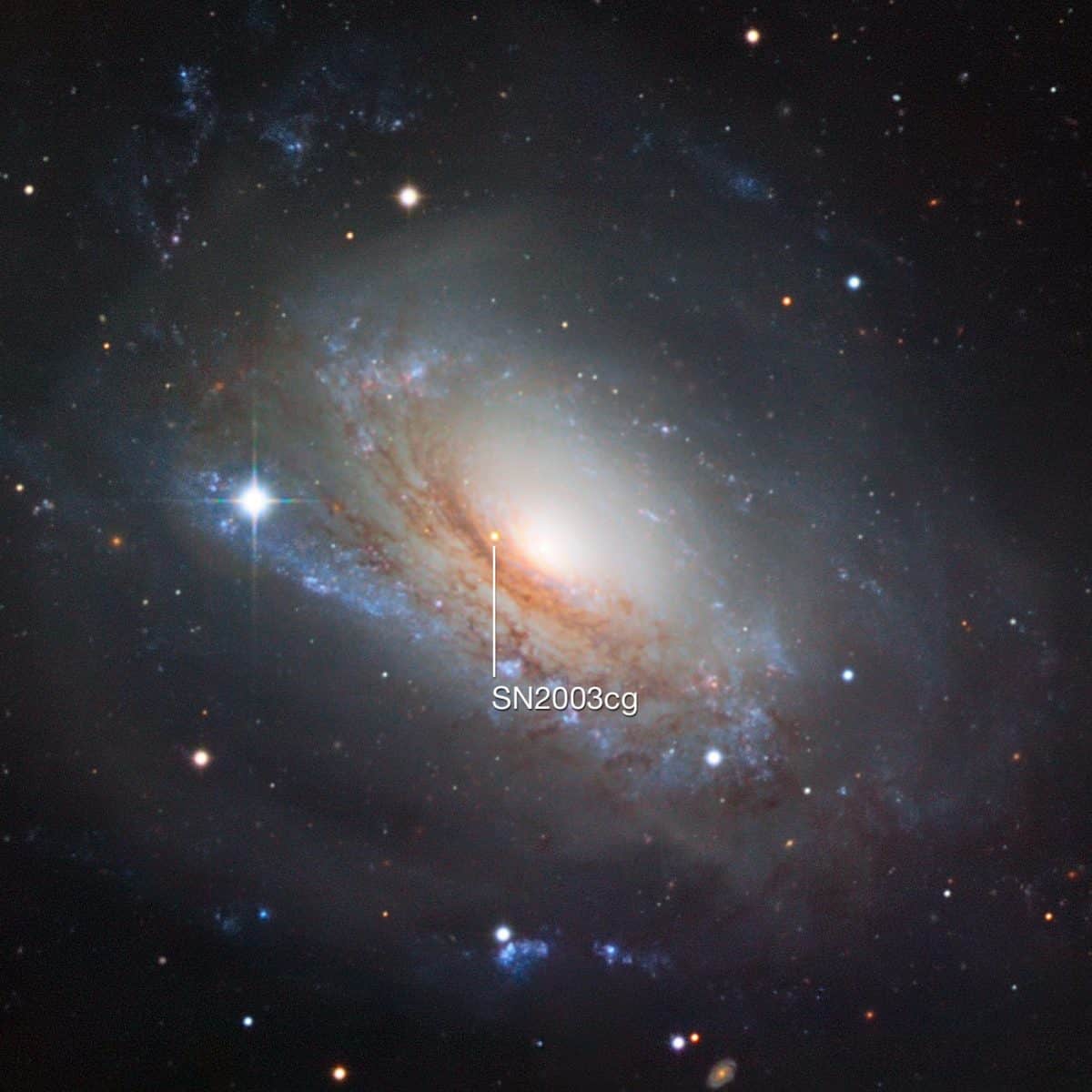The Cosmos with NGC 3169 & SN2003cg
This section of a picture from the Wide Field Imager on the MPG/ESO 2.2-metre telescope at the La Silla Observatory in Chile shows the galaxy NGC 3169 and marks the location of the supernova SN 2003cg.
NGC 3169 is a spiral galaxy about 75 million light years away in the constellation Sextans. It has the morphological classification SA(s)a pec, which indicates this is a pure, unbarred spiral galaxy with tightly-wound arms and peculiar features. There is an asymmetrical spiral arm and an extended halo around the galaxy.
This is a LINER 2 galaxy that displays an extended emission of X-rays in the region of the nucleus. A hard X-ray source at the center most likely indicates an active galactic nucleus. The stellar population in the nucleus, and a ring at an angular radius of 6″, shows an age of only one billion years and is generally younger than the surrounding stellar population. This suggests that a burst of star formation took place in the nucleus roughly one billion years ago.
In 1984, a Type II-L supernova was discovered in this galaxy. Designated 1984E, the spectrum of this event at maximum light showed prominent balmer lines that indicated the explosion occurred inside a dense shell of hydrogen surrounding the star. This shell was likely created by a strong stellar wind from the progenitor star. A second supernova was discovered in 2003; this time of type 1a. It was designated SN 2003 cg and reached peak magnitude 15.94
